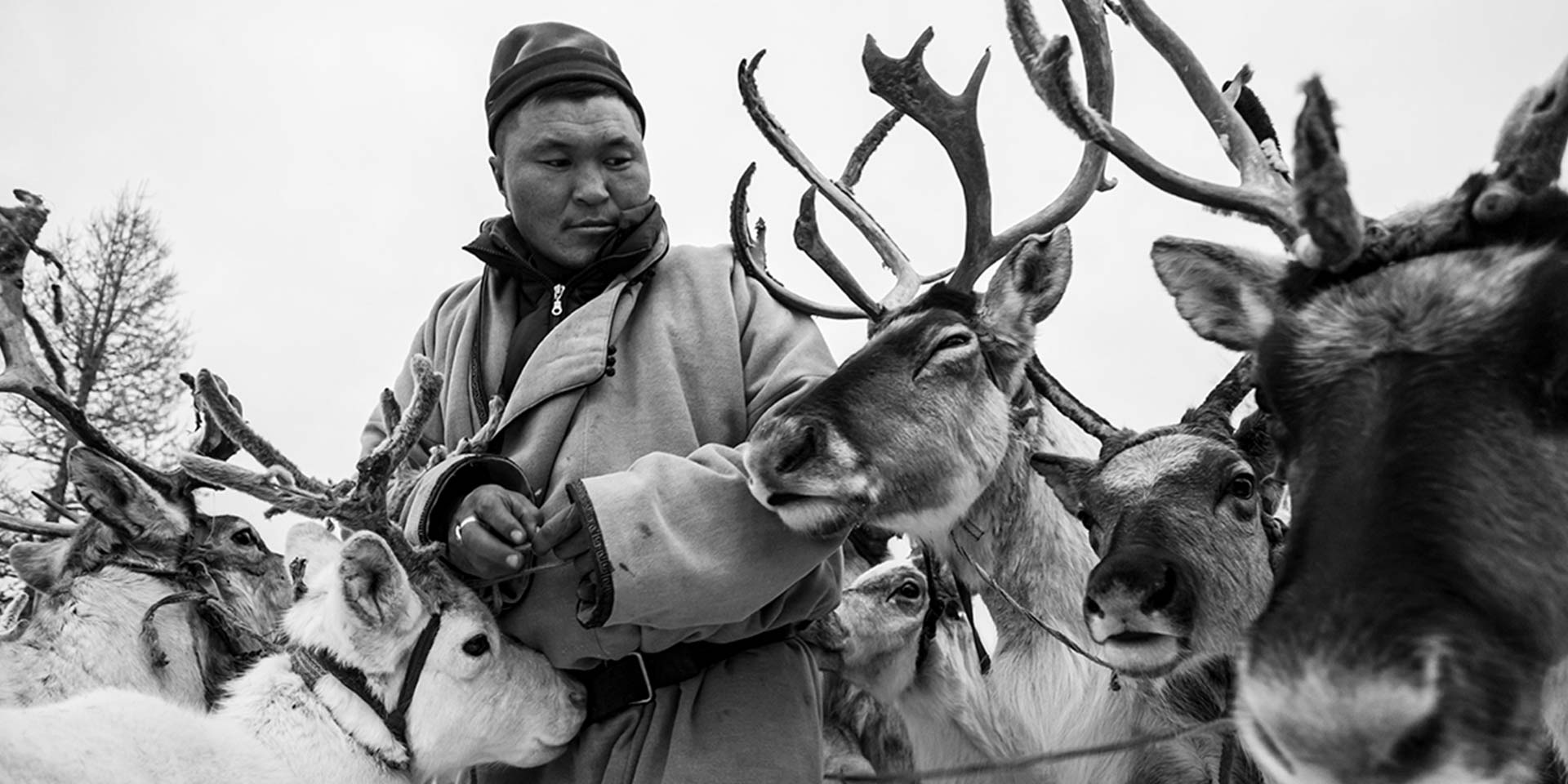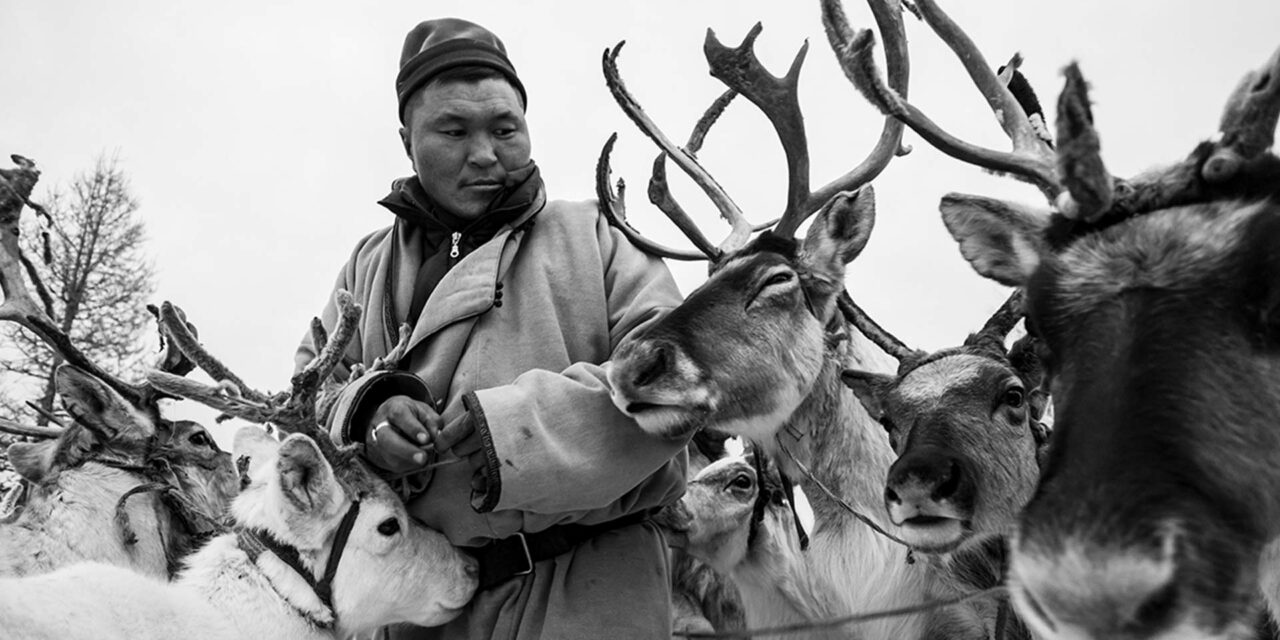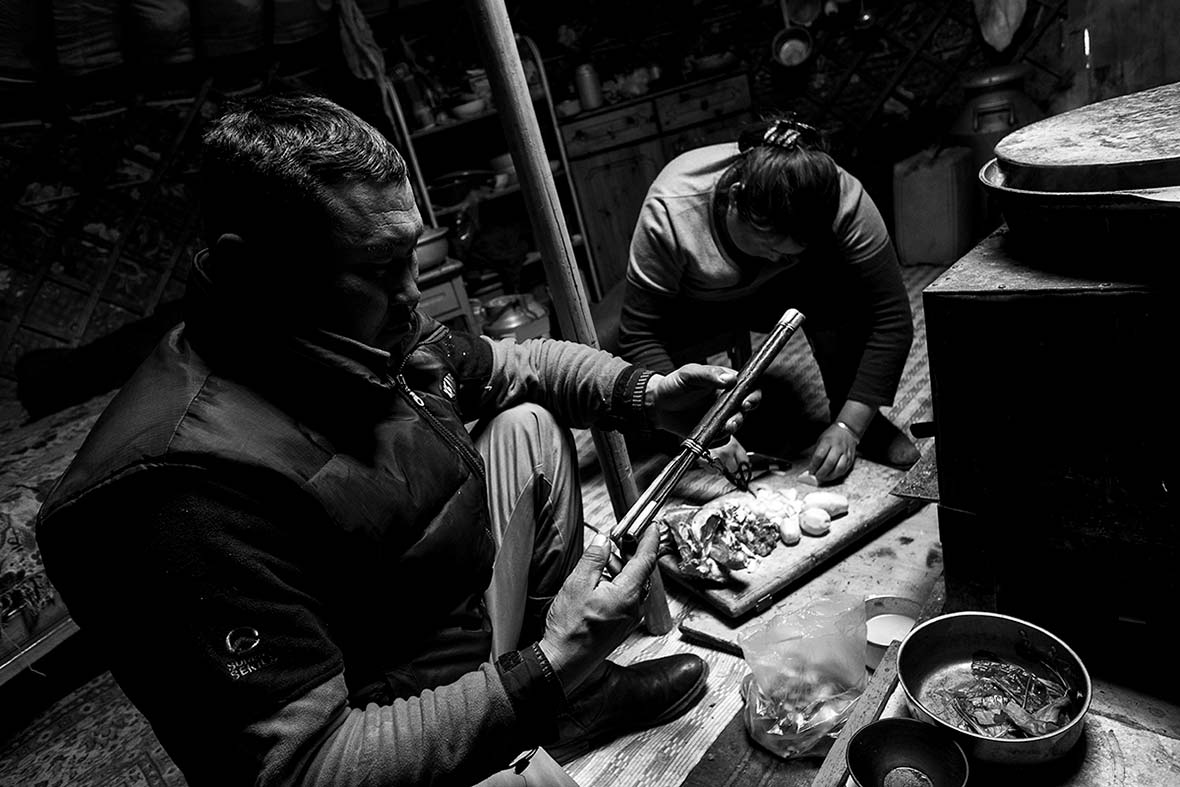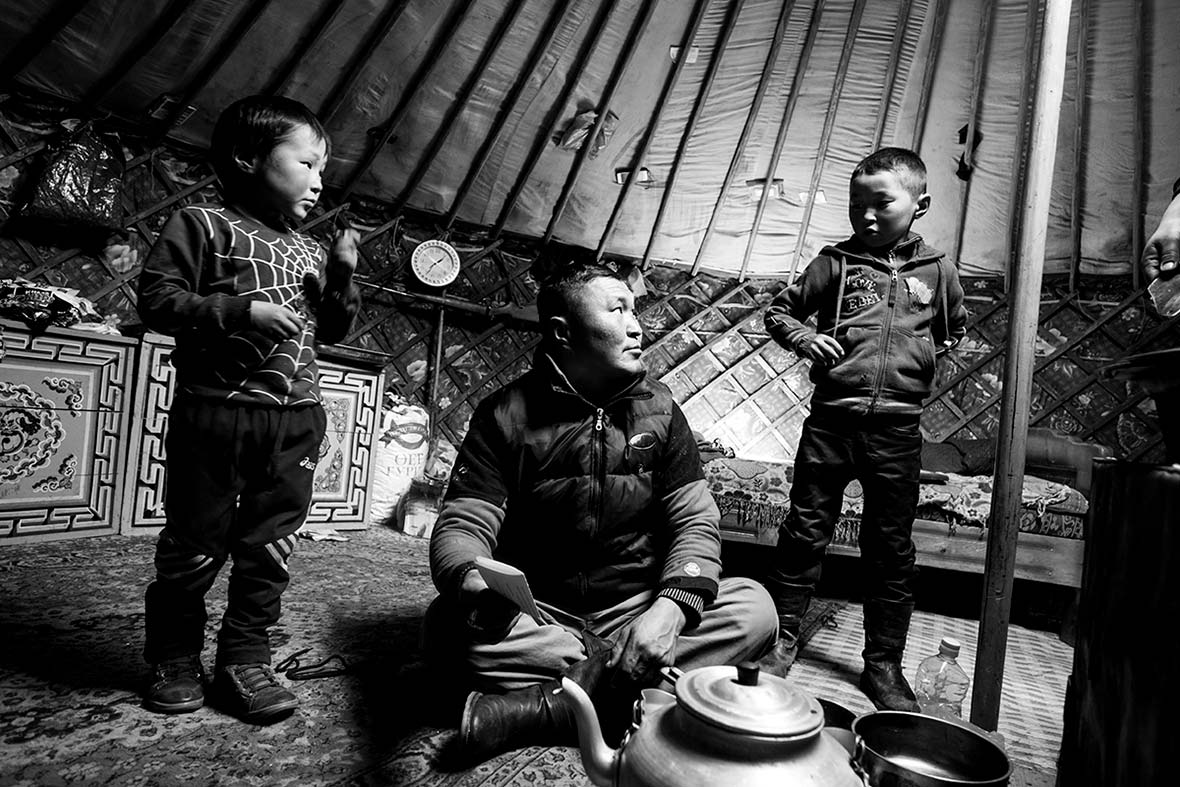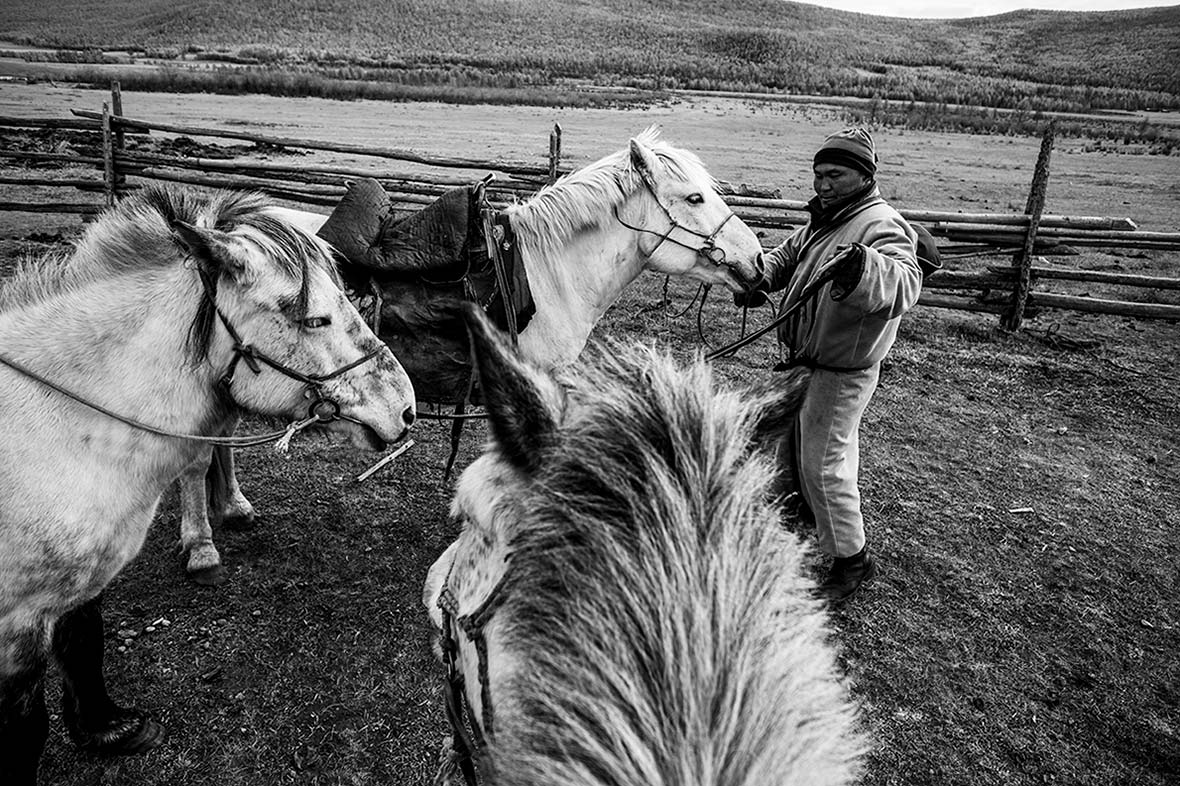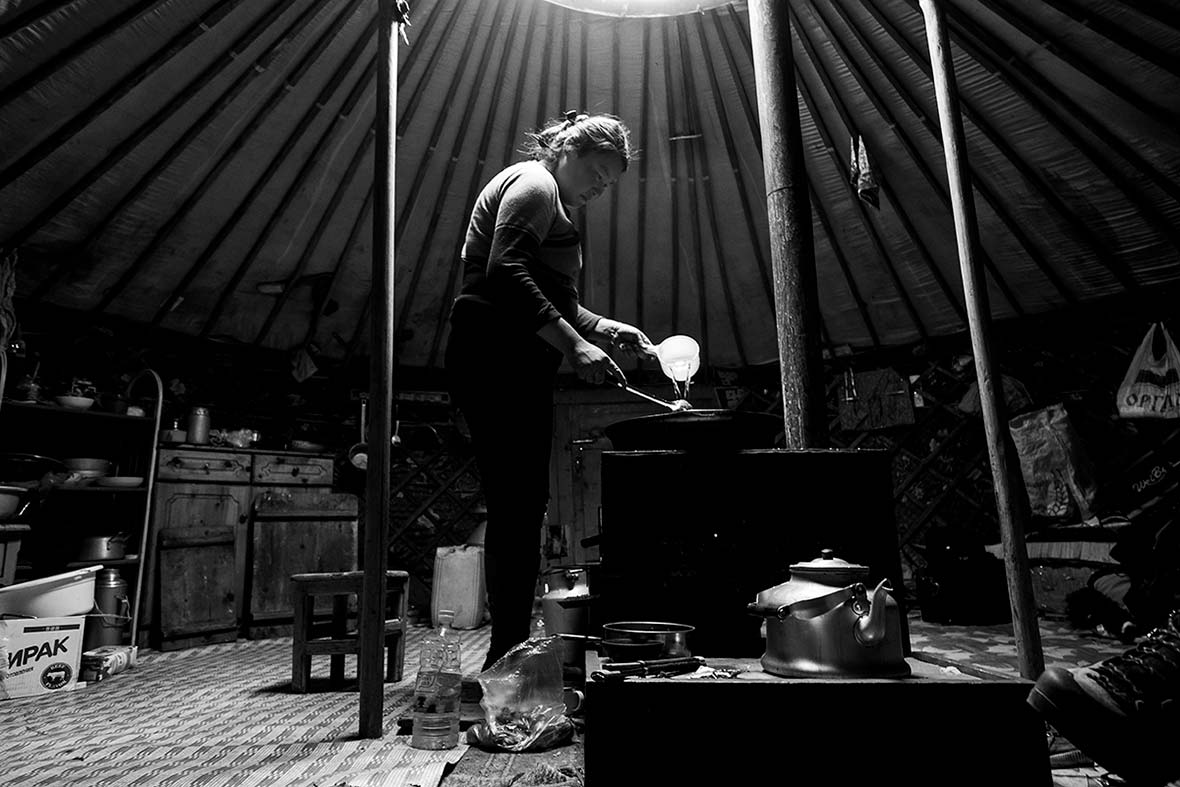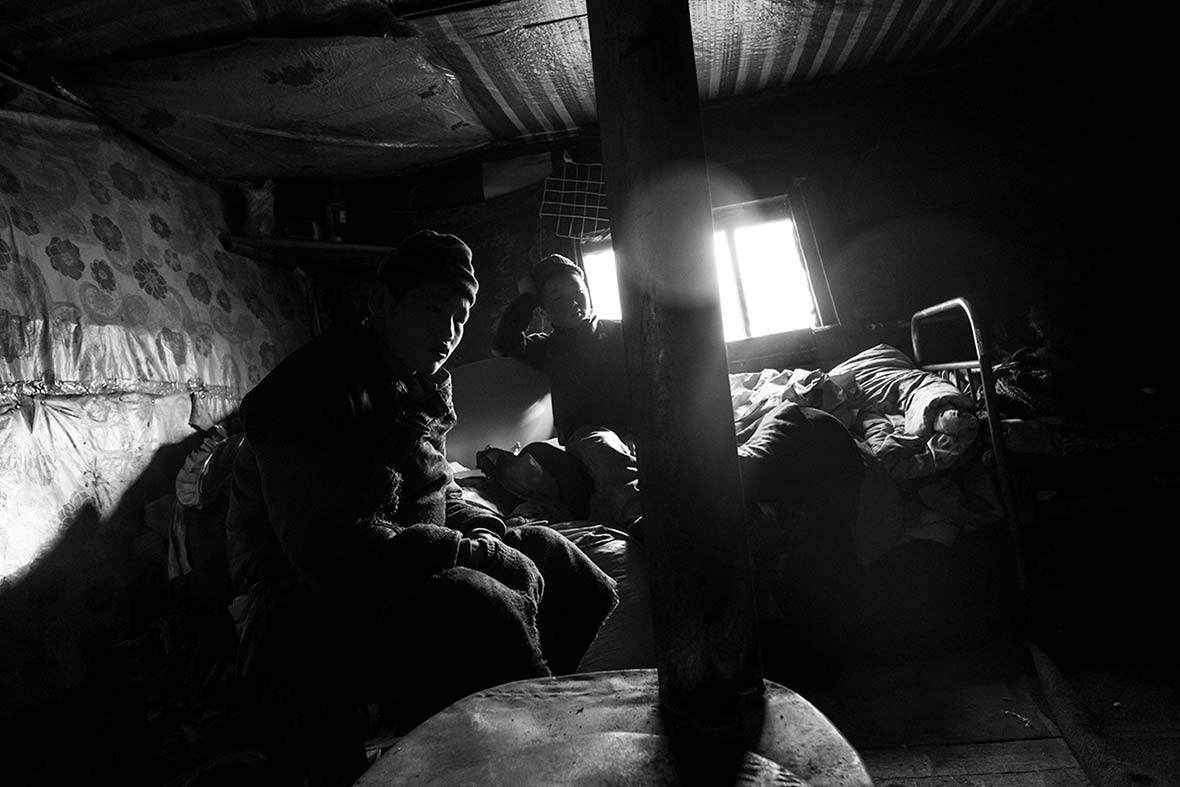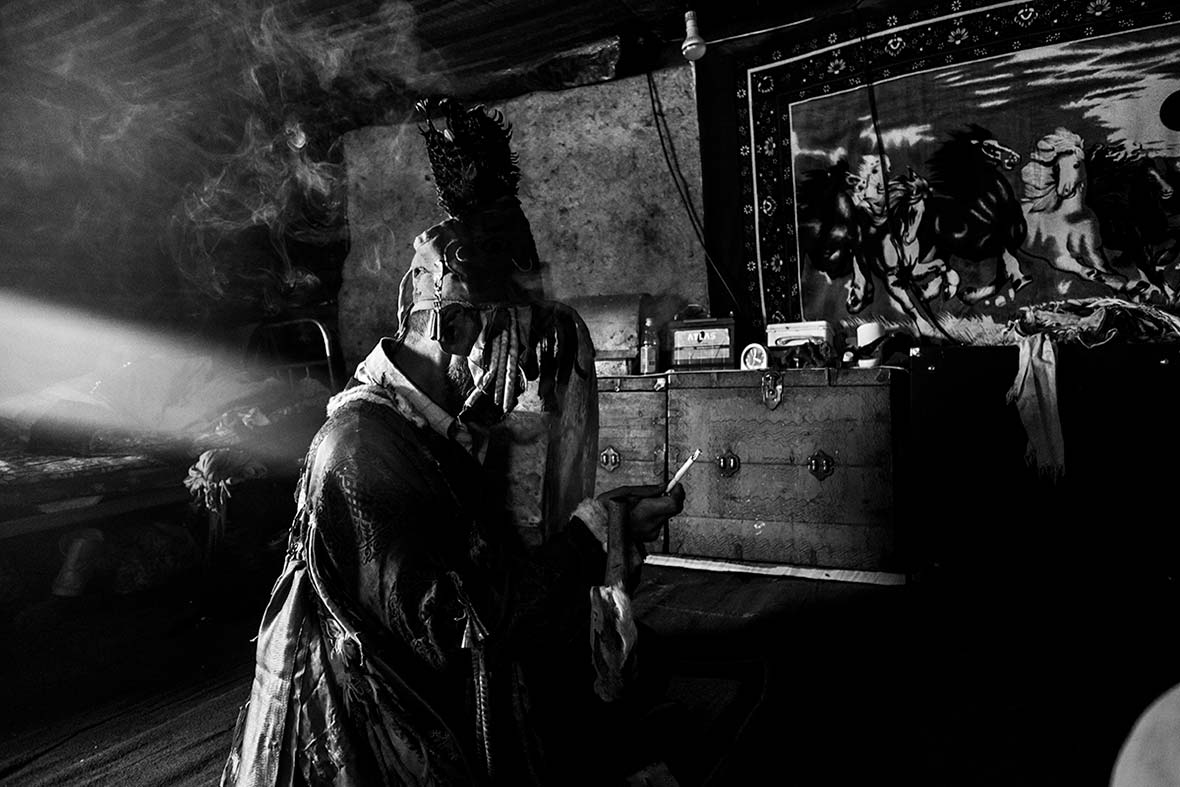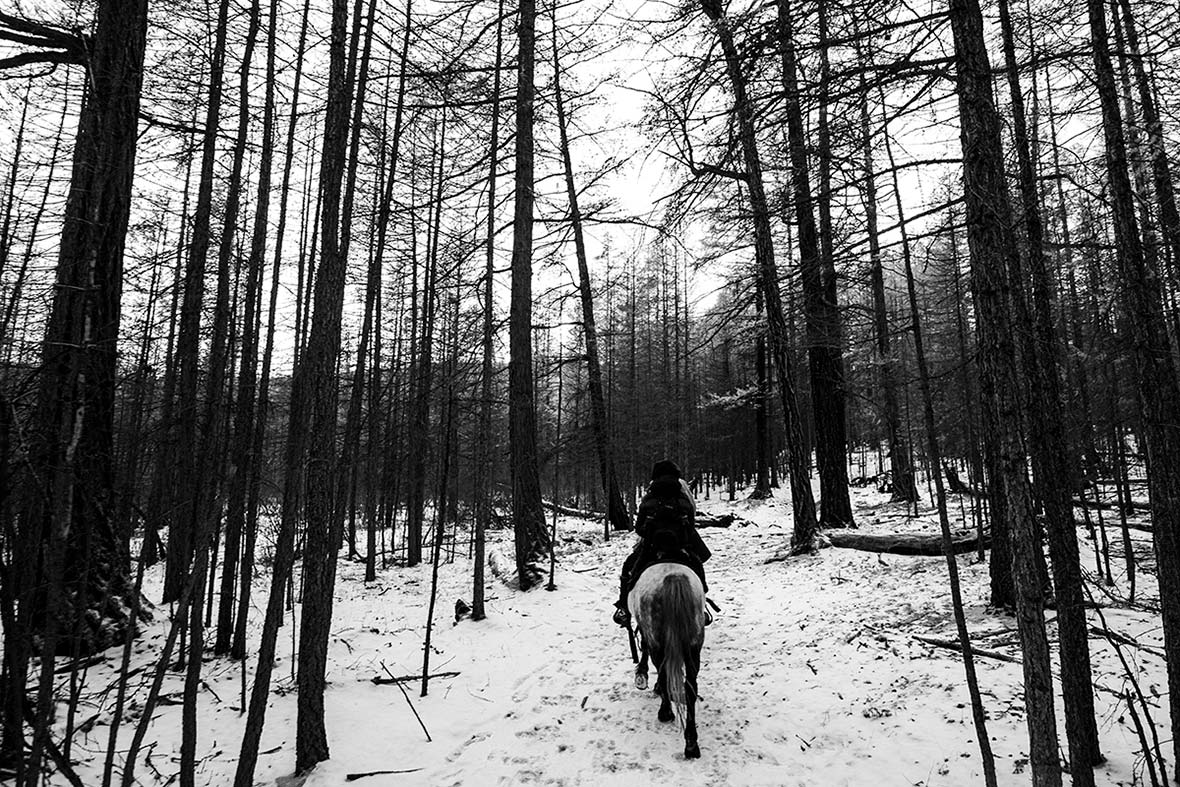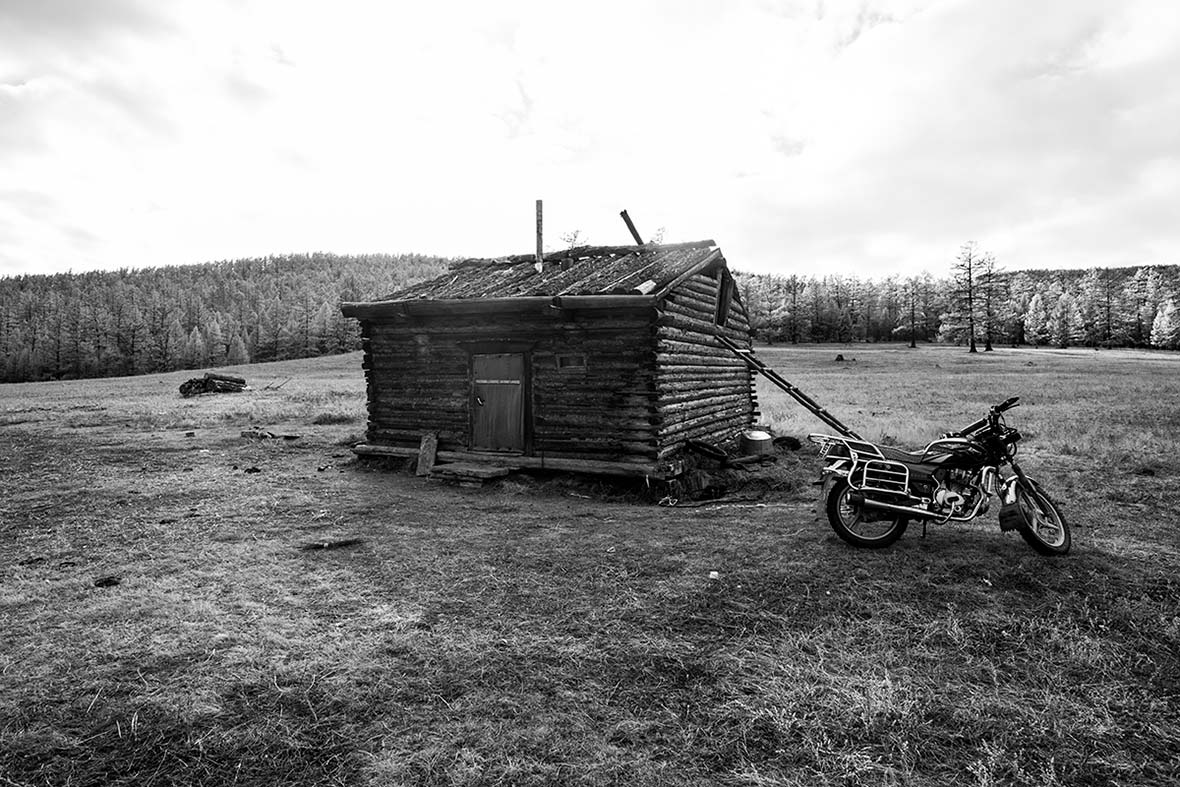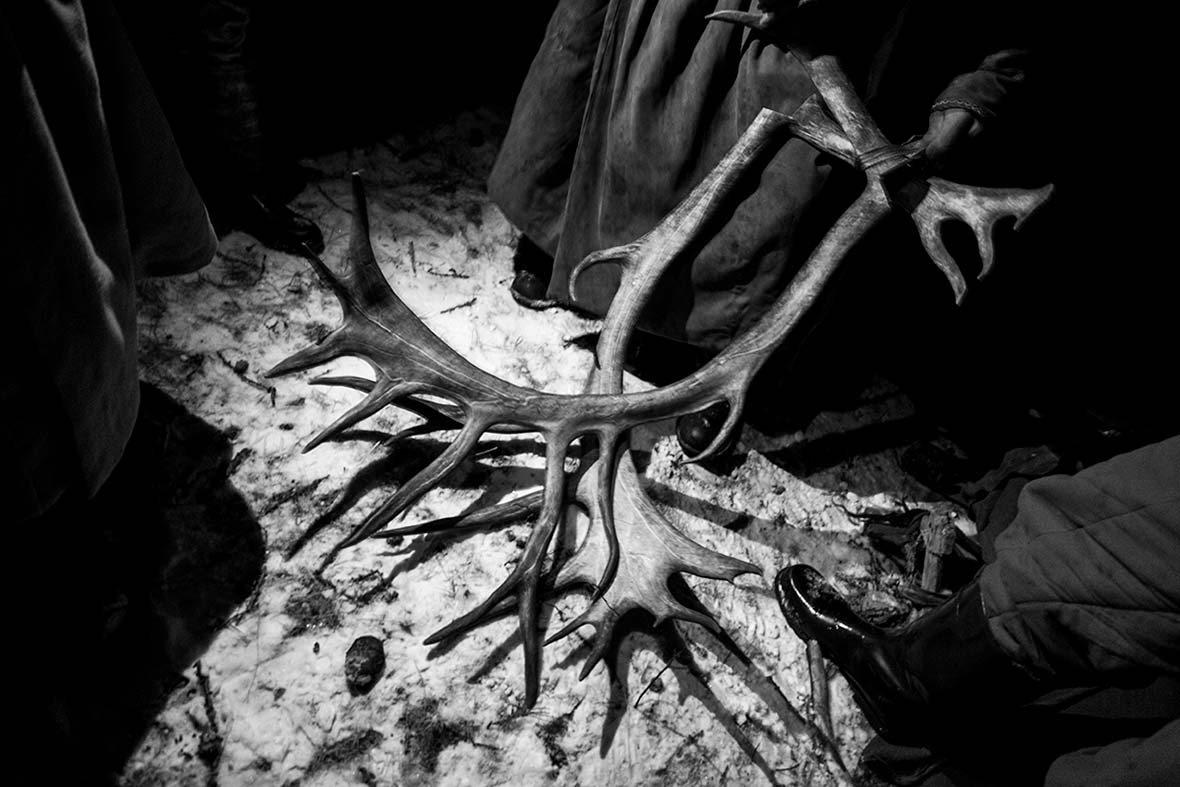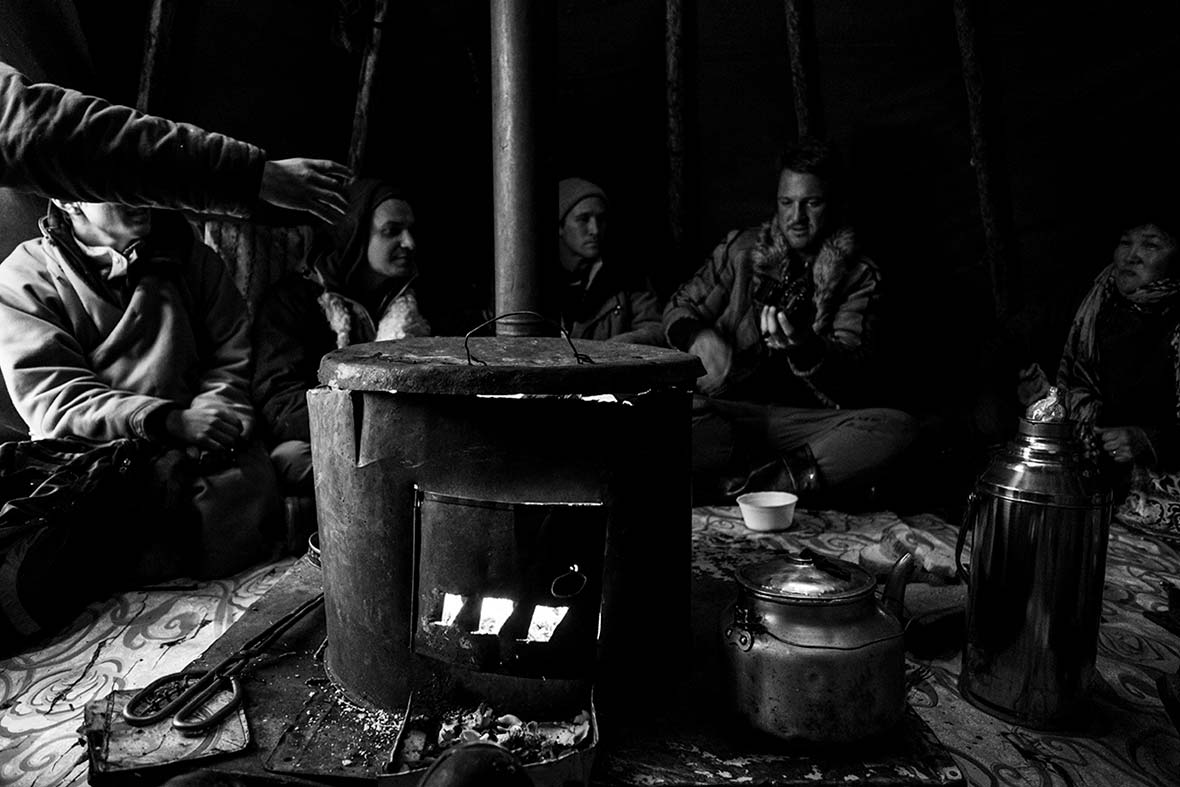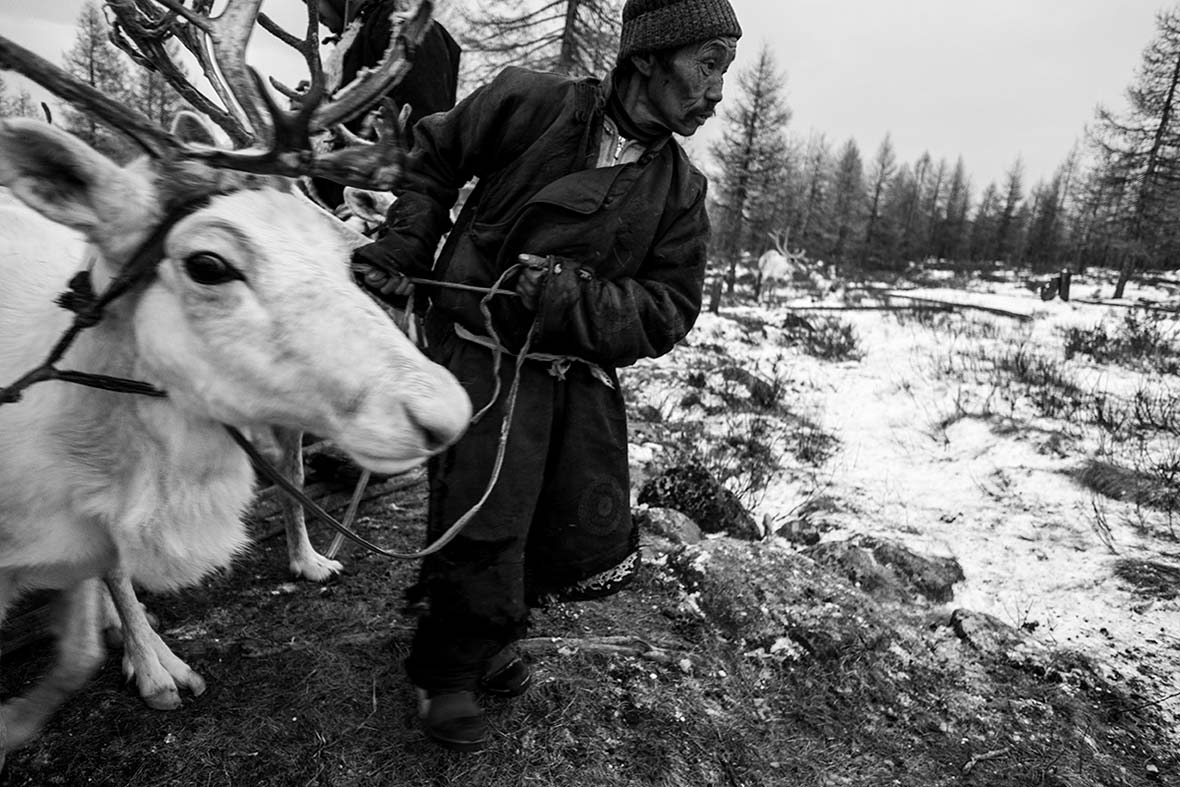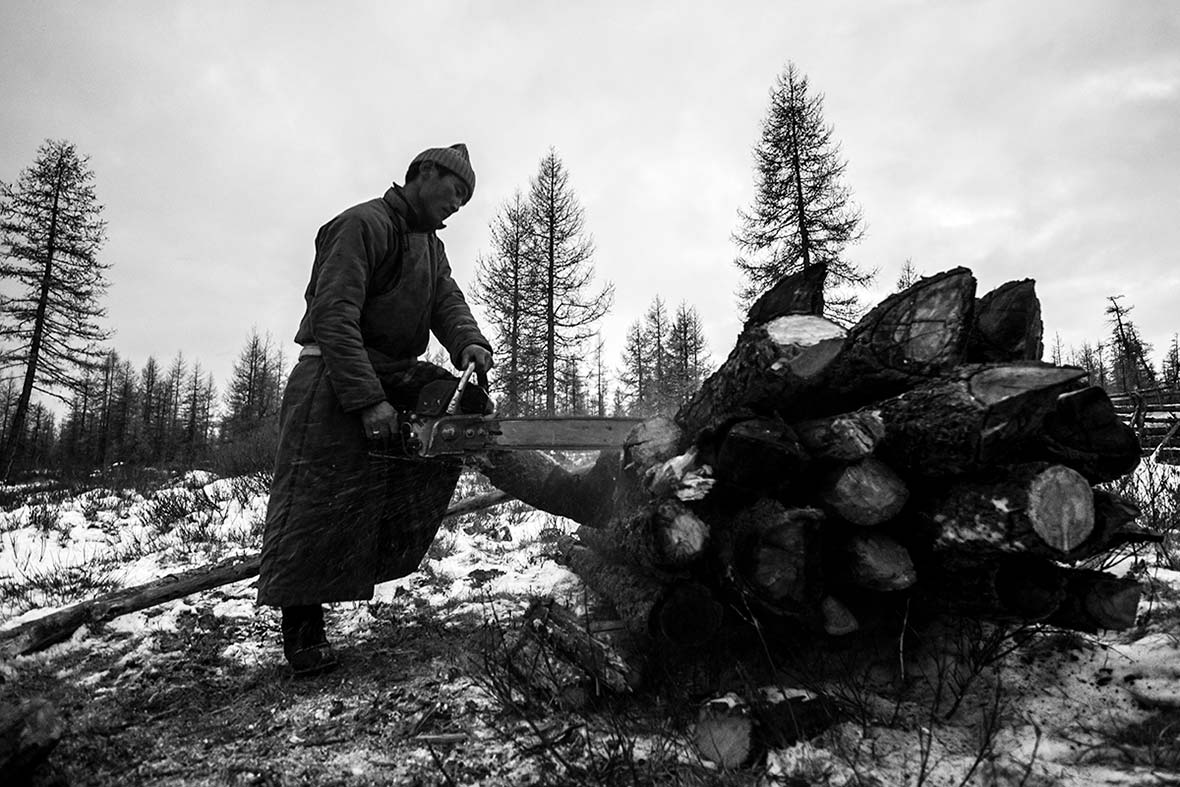The desert, the steppe, the hills, the taiga, and the snow-capped mountains — Mongolia is an impressive, spiritual landscape. The horizons are silent and seemingly endless. Mongolia is a land of nomads. Today, as opposed to seven hundred years ago, travelers can opt for cars and motorcycles rather than horses, but the landscapes themselves remain unchanged. Mongolia is an impressive, spiritual landscape.
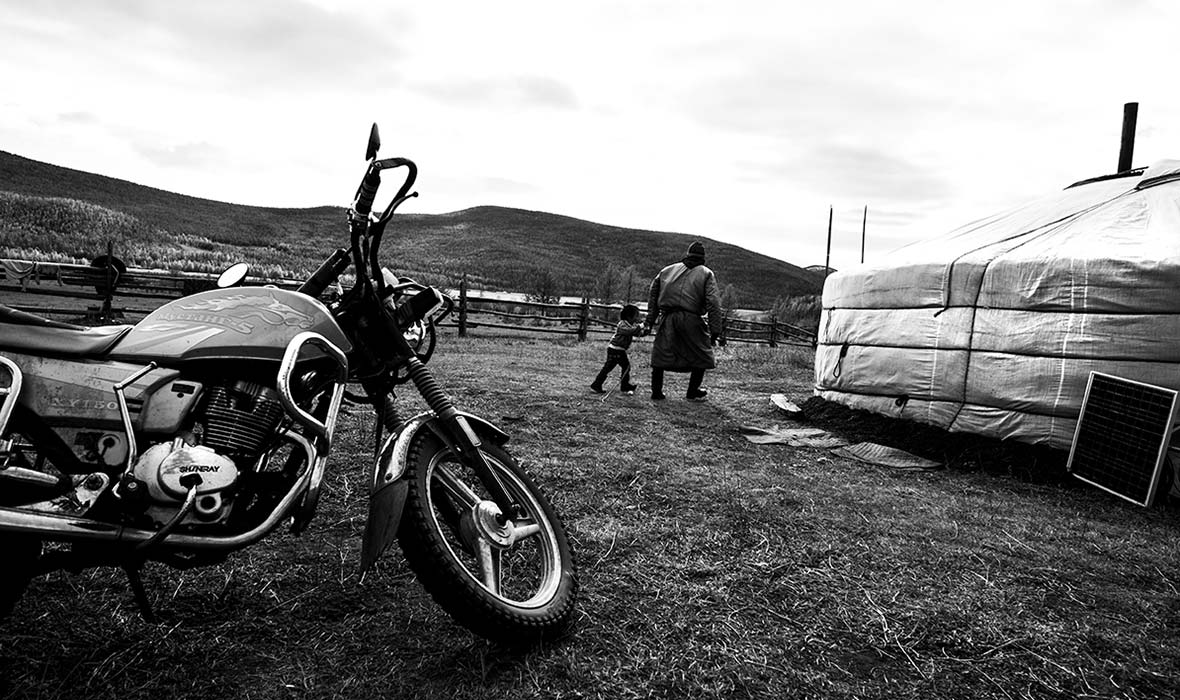
ABOVE: Motorbike to the taiga.
Not far from the Mongolia-Russia border, there are still small villages in the middle of the taiga. The taiga is a delicate ecosystem, characterized by forests of coniferous trees and birch. These alternate with wetlands and marsh swamps, which freeze over in the harsh winter climate.
To reach this snow-covered forest you have to cross — by car, motorbike, or on horseback — Lake Hovsgol, the largest lake in the country at the foot of the Eastern Sajany mountains, which freezes for about four months during the winter period in which the temperatures reach – 40 °. It is here that we are heading, thanks to the help of an old but capable motorbike.
Despite a sudden snowstorm, the various pitstops create interesting situations as we find ourselves in the warm and familiar gers, the typical Mongolian houses. Uda, our guide along this journey, brings us into his home and allows us to play a game with this children as he helps his wife cook. He explains that we will need to rest and recover for the remainder of the journey on horseback. And that’s where the fun begins.
ABOVE: Images on the way to the last reindeer herders.
Neither of us had ever ridden in our lives. Uda gives us a crash course, obviously in the Mongolian language. To trot, beat the legs on the sides of the body by starting to say ‘chou chou’ and to brake, just pull the reins. Easy, yes?
The effort involved gives way to the majestic landscapes that you seem to only ever see in films. And it is here that we arrive at Nergui’s.
We dismount and introduce ourselves with respect to the Nergui’s household, welcomed by the woman of the house, a sweet, older woman. Offering the first round of airag — salted fermented milk, diluted with tea and slightly alcoholic — she asks us who we are and where we come from.
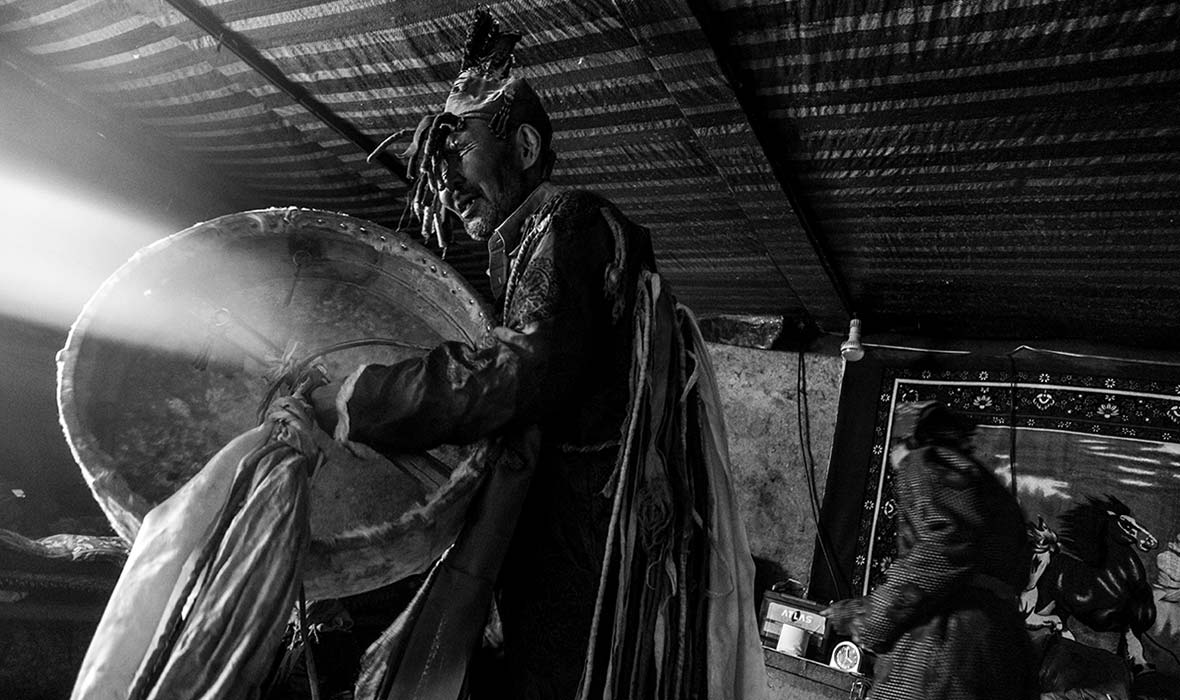
ABOVE: Nergui dancing.
During the conversation he takes a drum and and suit from a worn suitcase. He enters a trance, dancing and singing a song that gradually grows. He sprinkles smoke derived from juniper to call the ancestors.
We reflect on how shamans like Nergui believe in three fundamental concepts. The first is that the world is alive, and that plants, animals, rocks, and water have spirits and must be respected. The second point is “bujan” which is not dissimilar to “karma” in that the actions performed by every living being affects the second life. The third is balance, maintaining harmony within oneself, within the community, and in the environment.
ABOVE: Traveling by motorcycle and horseback.
Our journey, however, must go on, so we get back on the saddle and resuming the path where we left it: between the snow and the frozen streams to finally reach the Tsaatan, the last group of nomadic reindeer herders in Mongolia. The Dukhas, or Tsaatan, derive their economy and their lifestyle from the reindeer.
Originating in Russia, the Dukha (or Tsaatan in the Mongol language) are more similar to the Sami — the reindeer herders who live in the Scandinavian peninsula — than to the Mongolians of the steppe. The nomadic shepherds move with the ‘ortz’, inverted cone-shaped tents, similar to the tepees of the ancient Native Americans, following the reindeer cycles.
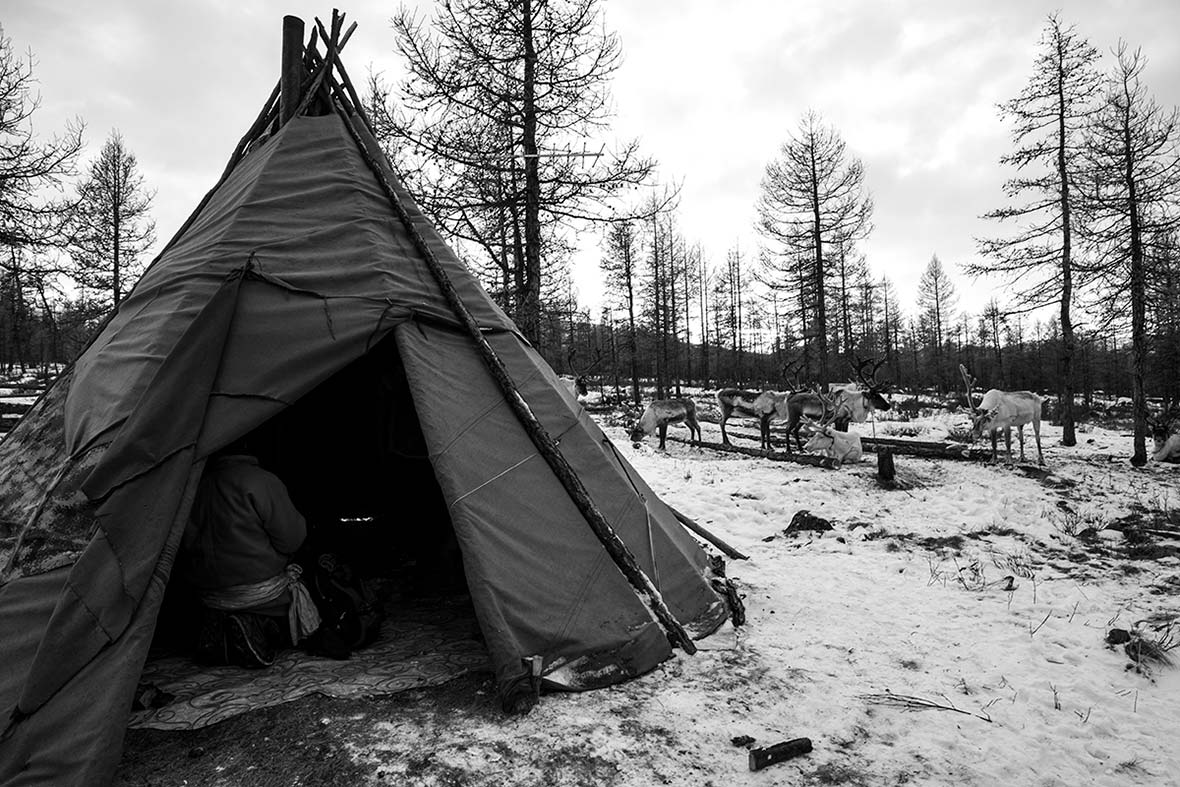
ABOVE: Reindeer outside the ortz.
These animals cannot live in the steppe or along the valleys due to the high temperatures. The Tsaatan live like this throughout the year with temperatures that reach between – 40 ° and -50 °. Milk is a precious food source to compliment their hunting; this milk is used for the production of cheese and for suutei chai, or milk mixed with black tea. The harsh environment means these people can not practice agriculture. They largely meat. They don’t practice agriculture because of the unfavorable environment, limiting themselves to eating only meat.
They tame the reindeer and break them to be ridden when they are very young, loading them with a weight of at least 20 kilos in the first year, moving to about 40 kilos in the second year, able to be ridden by age five.
ABOVE: Images of the Tsaatan.
Few Tsaatan remain. Their population today numbers only 44 families (about 200 – 400 people). They moved from Russia to Mongolian territory toward the end of World War II and tell of how they created positive ties with the Mongol state.
Never moving from the taiga, they remained a separate group, compared to the inhabitants at the bottom of the valley or in the steppe, and are distinguished by their great knowledge of the territory. Their faces are marked by harsh winters and working in the sun gives them darker skin and a weathered physique.
One of the most anticipated moments of the nomads is the meeting in front of the fire. In fact, it is usual to make a circle around the fire inside the tepee and share a hot meal, always accompanied by airag. With sheepskin and warm blankets to shelter from the cold, we close our eyes.
What remains of the Tsaatan pass on their beliefs, from generation to generation, invoking with songs their deceased ancestors.

